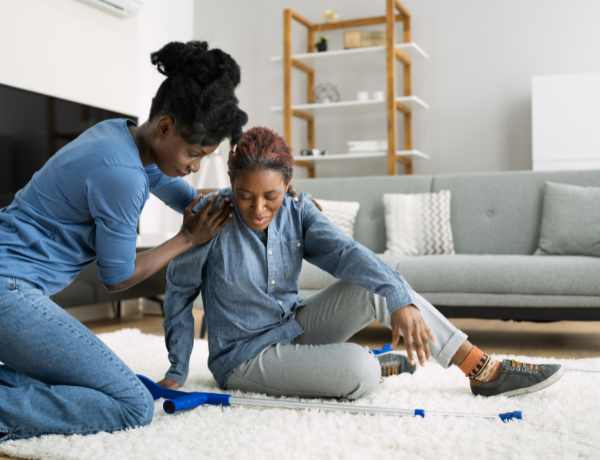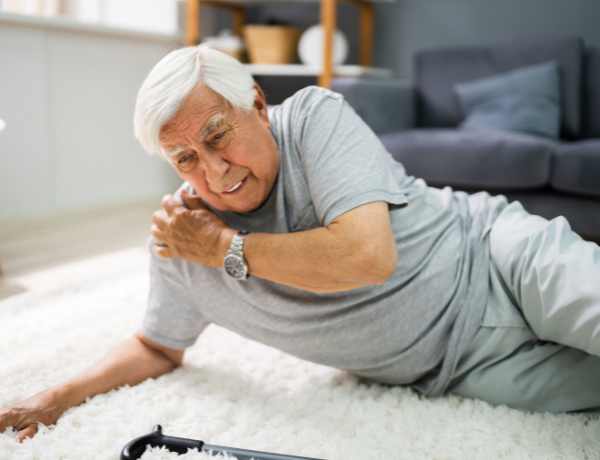
Falls are a leading cause of injury among older adults, with one in four seniors experiencing a fall each year. These incidents can have serious consequences, including fractures, head injuries, and loss of independence. However, by taking some preventive measures and making small changes in their living environment, seniors can significantly reduce their risk of falling. Here are some fall protection tips to keep your loved ones safe and maintain their independence.

Physical activity is crucial for maintaining strength, balance, and flexibility, which are essential for preventing falls. Encourage your loved ones to participate in activities such as walking, swimming, tai chi, or yoga. Always consult with a healthcare provider before starting any exercise program.
Some medications can cause dizziness or drowsiness, increasing the risk of falls. Regularly review your loved one's medications with their healthcare provider and discuss any potential side effects or interactions.
Wearing well-fitting, non-slip shoes can help prevent falls. Encourage your loved ones to avoid walking in socks, slippers, or bare feet. Additionally, ensure that their shoes are in good condition and replace them when needed.
Make the home environment safer by eliminating trip hazards and providing adequate lighting. Some tips include:
Consider using assistive devices such as canes, walkers, or reachers to help maintain balance and avoid falls. It's essential to choose the right device and have it properly fitted by a healthcare professional.
Poor vision or hearing can increase the risk of falls. Encourage your loved ones to have regular check-ups and update their glasses or hearing aids as needed.
Encourage seniors to stay socially connected with friends and family, as isolation can lead to inactivity and poor mental health. Regular social interactions can help maintain overall well-being and promote a healthy lifestyle.
There are several potential fall hazards for seniors in their daily living environments. Identifying and addressing the risk for falls can help prevent falls and improve safety. Some common fall hazards include:
Inadequate lighting in rooms, hallways, and stairways can make it difficult for seniors to see obstacles and navigate their living spaces safely.
Items such as loose rugs, electrical cords, or general clutter on the floor can pose tripping hazards.
Uneven flooring, wet or slippery surfaces in bathrooms or kitchens, and transitions between different types of flooring can increase the risk of falls.
Stairs without handrails or with worn, slippery, or uneven steps can be challenging and dangerous for seniors to navigate.
Wearing ill-fitting shoes, shoes with slippery soles, or walking in socks or slippers can contribute to falls.
The absence of grab bars in bathrooms and handrails on stairs or in hallways can make it difficult for seniors to maintain balance and stability.
Unstable or unsecured furniture, such as wobbly chairs or tables, can pose a risk if seniors attempt to use them for support.
High door thresholds or transitions between rooms can be a tripping hazard, particularly if they are not easily visible.
Pets can inadvertently cause falls by getting underfoot, and pet toys or supplies left on the floor can pose additional tripping hazards.
Some medications may cause side effects like dizziness, drowsiness, or low blood pressure, which can increase the risk of falls.
Poor vision or hearing can make it difficult for seniors to navigate their environment safely and recognize potential hazards.
Chronic health conditions, such as Parkinson's disease, arthritis, or neuropathy, can affect a senior's balance, strength, and mobility, increasing their fall risk.
To minimize the risk of falls, it's essential to assess seniors' living environments regularly and make any necessary modifications to improve safety. Encourage seniors to engage in regular exercise, maintain good overall health, and communicate any concerns or changes in their health to their healthcare provider.
According to the U.S. Centers for Disease Control and Prevention (CDC) data available in 2021:
Contact Senior Advocate Center Today to learn how you can keep your loves ones safe.
Below is a list of frequently asked questions (FAQs) about seniors slipping and falling:
A: Seniors are at a higher risk of falling due to factors such as age-related physical changes, loss of muscle strength, reduced balance and coordination, chronic health conditions, and side effects from medications. These factors may contribute to an increased risk of slipping, tripping, or losing balance.
A: Common causes of falls among seniors include:
A: Falls can cause a wide range of injuries, including:
A: If a senior falls, first ensure their safety and check for injuries. If they have suffered a severe injury or are unable to move, call for emergency medical assistance. If the injury is minor, help them get up safely and monitor their condition. It is essential to inform their healthcare provider about the fall, as they may need to assess the individual's overall health and fall risk.
A: Yes, falls can have long-term consequences for seniors. These may include chronic pain, reduced mobility, loss of independence, and a decline in overall health. Additionally, falls can lead to a fear of falling, which may result in decreased activity and social isolation, further exacerbating health issues.
Fall protection for seniors is essential to ensure their safety and well-being. By following these simple tips, you can help reduce the risk of falls and keep your loved ones healthy and independent. Remember, it's never too early or too late to start implementing fall prevention strategies.
Our expert partner attorneys offer free consultations for your claim.